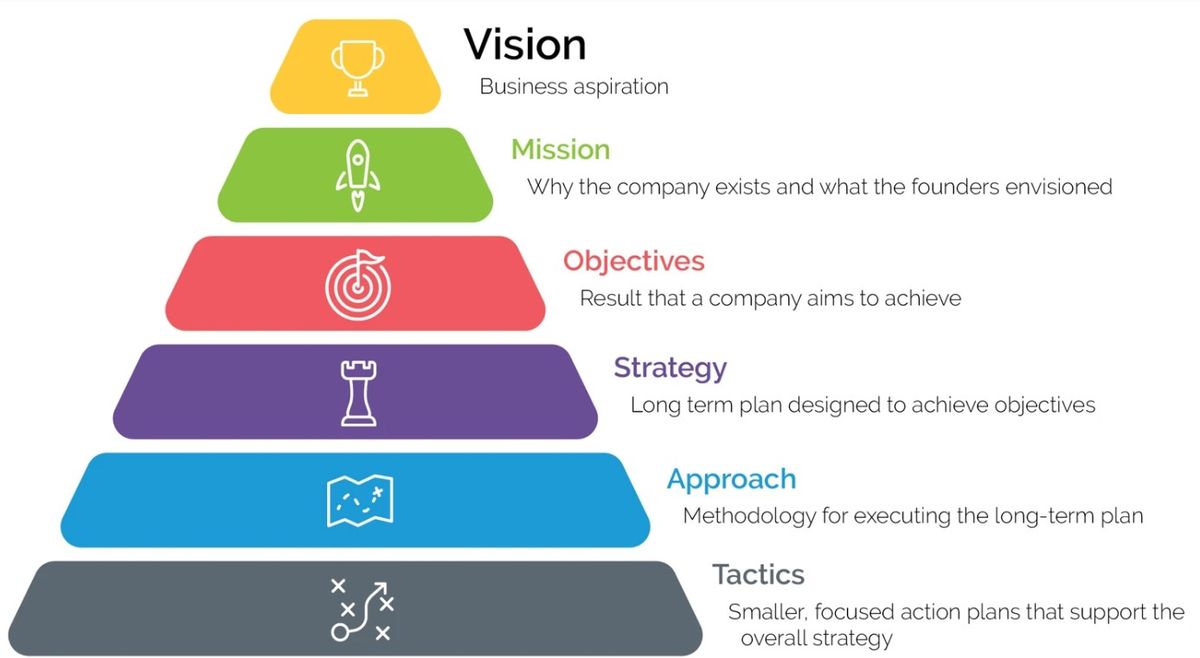Product Vision, Product Strategy and Business Objectives
Why is it crucial for companies to ensure that their product vision, product strategy, and business objectives are in perfect harmony when striving to develop products that truly resonate with customers? This article delves into the significance of this alignment.

Business context
Business context has two components:
- The product vision and strategy
The product vision describes the future we are trying to create, typically somewhere between two and five years out. The product vision is one of our most effective recruiting tools, and it serves to motivate the people on your teams to come to work every day.
The product strategy is our sequence of products or releases we plan to deliver on the path to realizing the product vision.
Product vision and strategy describe the big picture of what the organization as a whole is trying to accomplish and the plan for achieving that vision.
- The business objective
This describes the specific, prioritized business objectives for (each) product team. Tell the team what you need them to accomplish and how the results will be measured, and let them figure out the best way to solve the problems.
It is the management’s responsibility to provide each product team with the specific business objectives they need to tackle. The difference is that the product team is now prioritizing business results, rather than product ideas.
The advantage of this way of working is that the teams are much more motivated when they are free to solve the problem the best way they see fit. Teams are designed to be in the best position to solve these problems and it is all about outcome rather than output.
Product Strategy
To illustrate what is defined by Management and what is defined by the Product take a look at the Product Strategy Stack in the image below. Tops down from mission to product goals all the effort is on correctly defining, planning and alignment on the execution plan; creating any good products or leading any company well without having a clearly defined mission and how to reach these objectives i.e. company and product strategy is not possible. Bottoms up is evaluation; communicate the status of execution, the relatedness and success of the product by tracking how well the product is reaching defined organization’s business objectives.
Source: Reforge
Building on Product Strategy Stack, an example of Product Strategy / Business Objectives and how it will be translated into Product is explained in the following. This illustrates the definition and evaluation importance. Airbnb had the mission to serve the people who want to rent mattresses in someone else’s house. Airbnb took the strategy of showing pictures of the rental places to attract more views and conversions. So the product enabled the feature and it was tracked initially, with an alarming behavior! Pictures were too poor in quality when uploaded by owners, so to meet the objective of conversions, founders hired professional photographers to take high-quality pictures to put on the website. The result was that the product feature was appreciated better and conversions increased exponentially for Airbnb.
Product Development Hierarchy
Getting it more practical and zooming into the Goals and how they are broken down to User stories, the image below illustrates the Product Development Hierarchy with an example of an online streaming platform. Here, a possible goal in the context of the product is illustrated.
Goals are what you want to achieve to meet your short term or long term vision and Initiatives are the high-level efforts that will help you achieve your goals. Success of an initiative, depending on the context of it can be measured by: objectives of initiative being met and the benefits are measurable, quality is met or exceeded the expectation, customers are satisfied, the budget for completion is well respected and support for initiative is well planned.
Alignment of Product Vision, Product Strategy and Business Objectives
Marty Cagan emphasizes in his book, INSPIRED, the importance of aligning product vision, product strategy, and business objectives in order to create products that customers love. He argues that without a clear product vision, product strategy, and business objectives, companies will lack the focus needed to create products that truly meet the needs of their customers.
Cagan emphasizes the need to ensure that the product vision, product strategy, and business objectives are closely linked in order to ensure that the product being created aligns with the company's overall goals and objectives. Cagan argues that a successful product requires a clear understanding of the customer needs and an effective product strategy that is tailored to meet those needs.
Conclusion
To conclude, for a product team to be empowered and act with a meaningful degree of autonomy:
- The team must have a deep understanding of the broader context. [product vision to inspire and set direction, and product strategy to get there];
- Clarity from leadership on the critical pieces of context; lack of clarity raises problems and leads to ambiguity over what a team can decide and what they can’t.
- Tell the team what you need them to accomplish and how the results will be measured, and let them figure out the best way to solve the problems.
Resource: INSPIRED: How to Create Tech Products Customers Love by Marty Cagan
